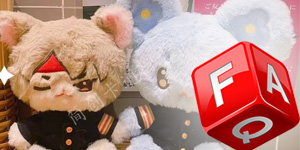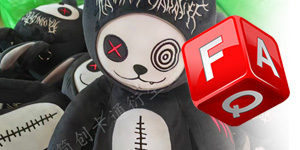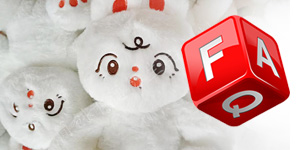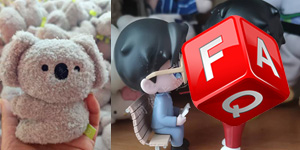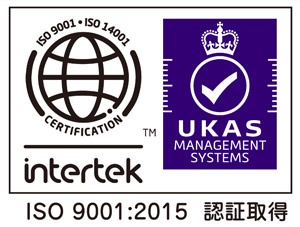animal plush toys can be made with allergy-friendly materials, making them safer for individuals with allergies or sensitive skin. Here are some key features to look for in allergy-friendly plush toys:
1. Hypoallergenic Fabrics
Organic Cotton: Plush toys made from organic cotton are a great option because they are free from harmful chemicals and pesticides that could trigger allergies.
Bamboo Fabric: Bamboo is naturally hypoallergenic and antibacterial, making it an excellent choice for plush toys that are gentle on sensitive skin.
Synthetic Microfiber: Some high-quality synthetic microfibers are designed to be hypoallergenic, providing a soft, non-irritating surface for plush toys.
2. Hypoallergenic Stuffing
Polyester Fiberfill: Look for plush toys filled with hypoallergenic polyester fiberfill. This material is resistant to dust mites and mold, common allergens that can cause reactions.
Natural Wool: Wool is naturally hypoallergenic and resistant to dust mites, though it may not be suitable for individuals with wool allergies.
3. Chemical-Free and Non-Toxic Dyes
Natural Dyes: Plush toys colored with natural or plant-based dyes are less likely to cause allergic reactions compared to those dyed with synthetic chemicals.
Certified Non-Toxic Dyes: Toys labeled with certifications like OEKO-TEX Standard 100 ensure that the materials and dyes used are free from harmful substances that could trigger allergies.
4. Anti-Dust Mite Treatments
Dust Mite-Resistant Materials: Some plush toys are treated with anti-dust mite solutions or are made from materials that naturally repel dust mites, reducing the risk of allergic reactions.
5. Easy to Clean
Machine Washable: Allergy-friendly plush toys should be easy to clean, as regular washing can help remove allergens such as dust, pollen, and pet dander. Look for toys that can be machine washed and dried without damage.
Removable Covers: Some plush toys come with removable, washable covers, allowing you to clean the toy more thoroughly and frequently.
6. Mold and Mildew Resistance
Quick-Drying Materials: Toys made from quick-drying materials are less likely to develop mold or mildew, which can be allergens. Consider plush toys that dry quickly after washing.
Mold-Resistant Fillings: Certain fillings, like polyester fiberfill, are resistant to mold and mildew, making them safer for allergy sufferers.
7. Certifications to Look For
OEKO-TEX Standard 100: This certification ensures that the toy is made from materials that are tested for harmful substances, making it safer for individuals with allergies.
Global Organic Textile Standard (GOTS): GOTS-certified toys are made from organic fibers and are produced in an environmentally friendly and socially responsible manner, ensuring fewer allergens and irritants.
8. Avoiding Common Allergens
No Latex: If you or your child has a latex allergy, make sure the toy is free from latex, as it can cause allergic reactions.
Fragrance-Free: Some plush toys may be scented, which can be problematic for those with fragrance allergies. Choose fragrance-free toys to avoid potential triggers.
9. High-Quality Construction
Tightly Woven Fabric: Plush toys made from tightly woven fabrics are less likely to trap dust and allergens, making them a better choice for allergy sufferers.
Minimal Fuzz and Shedding: Choose plush toys with minimal fuzz and shedding, as loose fibers can irritate sensitive skin and increase the likelihood of an allergic reaction.
10. Consider Anti-Allergy Sprays
Allergy-Reducing Sprays: You can use anti-allergy sprays designed to reduce allergens on fabrics, including plush toys. These sprays help neutralize dust mites and other allergens, making the toy safer to handle.







